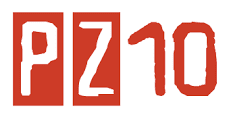An assembly line is a manufacturing process in which parts are added to a
product in a sequential manner using optimally planned logistics to
create a finished product in the fastest possible way. It is a
flow-oriented production system where the productive units performing
the operations, referred to as stations, are aligned in a serial manner.
The present edited book is a collection of 12 chapters written by
experts and well-known professionals of the field. The volume is
organized in three parts according to the last research works in
assembly line subject. The first part of the book is devoted to the
assembly line balancing problem. It includes chapters dealing with
different problems of ALBP. In the second part of the book some
optimization problems in assembly line structure are considered. In many
situations there are several contradictory goals that have to be
satisfied simultaneously. The third part of the book deals with testing
problems in assembly line. This section gives an overview on new trends,
techniques and methodologies for testing the quality of a product at
the end of the assembling line.
Assembly line balancing can be loosely defined as the process of optimizing an assembly line with regard to certain factors. Configuring an assembly line is a complicated process, and optimizing that system is an important part of many manufacturing business models. Maintaining and operating one is often quite costly, as well. The main focus of balancing is usually to optimize existing or planned assembly lines to minimize costs and maximize gains.
Assembly line balancing is a classic ill-structured problem where total enumeration is infeasible and optimal solutions uncertain for industrial problems. A quantitative approach to classifying problem difficulty and solution quality is therefore important
Assembly line balancing can be loosely defined as the process of optimizing an assembly line with regard to certain factors. Configuring an assembly line is a complicated process, and optimizing that system is an important part of many manufacturing business models. Maintaining and operating one is often quite costly, as well. The main focus of balancing is usually to optimize existing or planned assembly lines to minimize costs and maximize gains.
Assembly line balancing is a classic ill-structured problem where total enumeration is infeasible and optimal solutions uncertain for industrial problems. A quantitative approach to classifying problem difficulty and solution quality is therefore important


